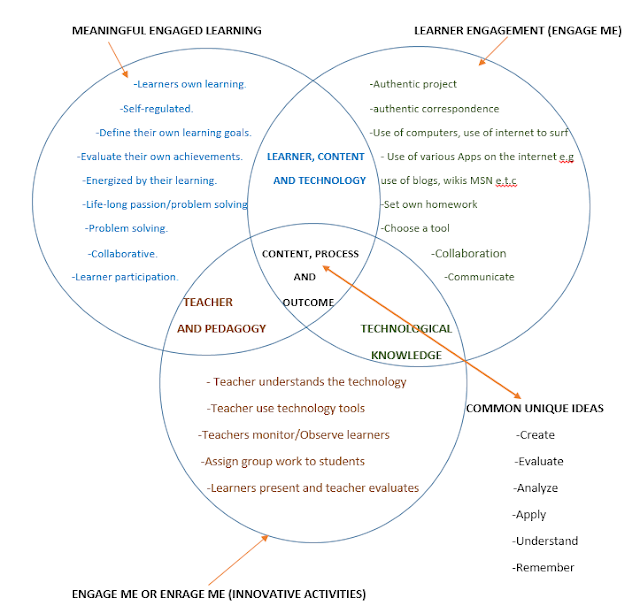
Real-world collaboration involves knowledge building. In this course I have found out that there are two forces i.e collaboration and Inertia.
Collaboration involves learners to exchange ideas, divergent opinions and conflict management within their group group. They can use various platforms more especially technology to communicate straight to the desired audience.
Inertia on the other hand involves those forces that tend to deter the knowledge building and real collaboration to take place. They include: some members hoarding information, social conflicts, delay in response and the inability to use a given collaboration platform very well. i.e technology deficiencies.
I learned that there is no straight forward designed path for collaboration and knowledge building but an interplay of steps and I have observed that the central aim of Real-World Collaboration is to create or build knowledge. I based my learning upon the well referenced model below:
Source: Stahl, G. (2000). A Model of Collaborative Knowledge-Building. In B. Fishman & S. O'Connor-Divelbiss Eds.), Fourth International Conference of the Learning Sciences (pp. 70-77). Mahwah, NJ: Erlbaum.
I experienced hardship in collaboration because some technology platforms were time bound for example the wikispace and Google Docs had links given by our tutor which would expire technologically before I could utilize it so I had to refer to the tutor all the time for a possible reset or re-sending of the links.
We used technology tools or collaboration platforms like Wikispaces, Google Doc and Mindmeister. They were good collaboration tools: Mindmeister helps in brainstorming and creating precise answers by a group in a summery form. Wikispaces and Google Docs almost play the same roles because they are collaborative platforms which any learner in a group can access when invited and can edit it as he or she contributes to the Knowledge Building process in an engaged collaborative way-That is exactly the way I i'm going to use it in my teaching at our school.
However, learner can use Digital cameras, mobiles phones and laptops as data capture tools in the field, and then collect data in order to solve the real world problems.


